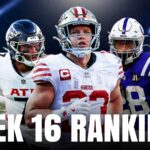Opinion: When this California Spanish-language TV station closed, a news desert opened

Univision and Telemundo were constantly on in Suzanne García’s childhood home in Santa Ana. For immigrant families like hers, Spanish-language news is not simply news translated from English; it’s news tailored to their experience, identity, interests, and background, explained García, a professor at Cal State Monterey Bay.
It doesn’t take an expert in bilingual and bicultural education like García to understand what it means for communities when these channels suddenly go dark.
KMUV 23, a Telemundo affiliate, was the Central California Coast’s only local, Spanish-language television news station. It abruptly shuttered in late September, eliminating one of the main sources of reliable information for viewers dependent on local reporting in their language.
“It’s a huge loss to not have Telemundo,” García said.
While much of the news coverage of the station’s closure focused on the English-language broadcast side, KION, and on the accelerating atrophy of local journalism, there are even fewer remaining options for the region’s Spanish-speakers—especially immigrants, who are vital to the economy but terrorized by raids on their communities.
### The Importance of Spanish-Language News in Monterey County
The Salinas Valley is known as the salad bowl of the world. Field workers and farms produce more than 371 million pounds of fruits and vegetables annually. More than half the leaf and head lettuce consumed in the United States is grown here.
Almost two-thirds of Monterey County’s residents are Latino, according to the U.S. Census. More than a quarter of residents are foreign-born, and the largest portion of that group—102,772 people—are from Latin America.
That’s too many people without a single source of local news in their main language.
### What Happened to KMUV 23 and Local News?
Telemundo and KION are owned by Missouri-based News-Press & Gazette Co., which operates TV stations in 10 regions across the country, including Palm Springs and El Centro.
On September 23, KION posted on its website that, effective 5 p.m. that day, it would begin airing news from KPIX, a station in the San Francisco Bay Area more than 100 miles away.
The closure of KMUV 23 comes after the contraction of the region’s *Salinas Californian* newspaper and the end of its *El Sol*, a local bi-weekly Spanish-language newspaper. It has also been 20 years since the *San Jose Mercury News* shuttered *Nuevo Mundo*, its Spanish-language weekly.
### Radio vs. Television News
Local Spanish-language radio remains, but Sandy Santos, the last producer at KMUV, explained there is a distinction between those stations and what KMUV offered.
“Local Spanish-language radio is not properly set up for reporting and fact-finding,” she said. “We have some radio, but it’s more music and entertainment, not news.”
### The Rise of Social Media as an Information Source
Like elsewhere, Salinas has seen the vacuum of local news lead to a rise of social media content creators.
Alejandra Ruiz, a health outreach worker with Mujeres en Acción, said that in the absence of trusted outlets and reporting, migrant communities are turning to social media for updates on immigration raids and local news.
García said even she is starting to rely on social media for information.
Santos acknowledged that dependence on social media for news is a new reality, but warned that “likes” and “shares” are not the same as reported fact.
“It leads to chaos, misinformation, and half-truths,” Santos said.
### Limited Local Coverage from Other Regions
For now, locals will have to rely on Spanish-language television news from the Bay Area.
Santos noted that Telemundo’s other Central Coast station north of Los Angeles still exists, but news from Santa Barbara, Santa Maria, and Oxnard won’t be helpful for residents in Monterey County.
“I just don’t know how useful that is for folks in Monterey County, Salinas, or Santa Cruz,” she said.
### Wider Repercussions for the Community
The closure of the region’s last locally produced Spanish-language news broadcast will have repercussions beyond media metrics and the commercial value of a captive audience.
It could impact voting and civic engagement, García said, especially among mixed-status families where some members lack legal documentation and others are citizens.
García recalls TV news coverage in 1994 of Proposition 187, the voter-approved initiative that sought to deny undocumented immigrants public education, social services, and non-emergency medical aid. Los Angeles’s Telemundo and Univision stations reported on the ballot initiative from the perspective and understanding of immigrant communities, she noted.
Education policy shapes schools, García added, and Monterey County has high rates of English-learners and bilingual students.
Residents, including those in immigrant and Spanish-only homes, need to be informed about school policy—including this summer’s freeze in federal funding for migrant education and looming federal budget cuts.
Awareness of their rights and responsibility to advocate for programs serving themselves and the broader community is vital.
In general, the loss of local reporting ultimately correlates with a decline in civic engagement—think voting—and an increase in corruption, studies show. It doesn’t matter what language is spoken.
We may soon learn what that looks like for the Spanish-speaking population in Monterey County.
—
*George B. Sánchez-Tello is a reporter and writer who teaches at California State University, Northridge. This column was co-published by CalMatters and Voices of Monterey Bay.*
https://www.mercurynews.com/2025/10/30/opinion-when-this-california-spanish-language-tv-station-closed-a-news-desert-opened/






